It’s never a bad idea to stockpile ammo.
If you’re a doomsday prepper who’s always coming up with strategies to survive the zombie apocalypse, you already know how important it is to have some bullets for that weapons cache you’ve got in your gun safe.
But storing ammo isn’t necessarily as simple as putting it in a box and forgetting about it. It requires a little bit of pampering. Otherwise, you could be ruining your ammo before you ever get to use it.
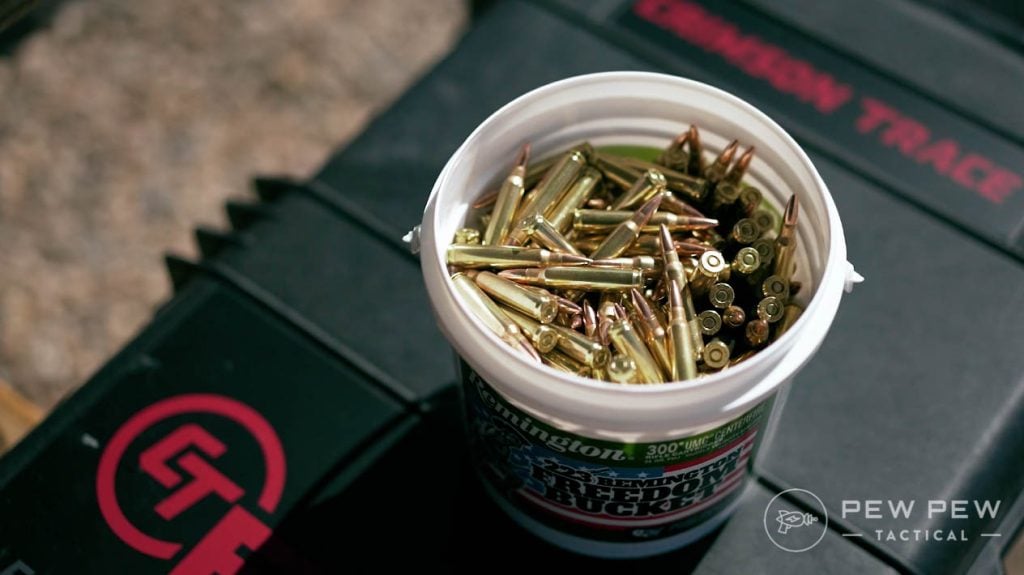
Today we’re going to talk a little bit about ammo storage, as well as the dos and don’ts of caring for your stockpile so that you can squeeze more life out of your ammunition.
Table of Contents
Loading…
Every Shooter’s Nightmare
There’s no way to sugarcoat it…ammo ain’t cheap.
The last thing you want to do is create a surplus of your favorite rifle, pistol, and shotgun ammo, only to find it green and corroded in the following years.
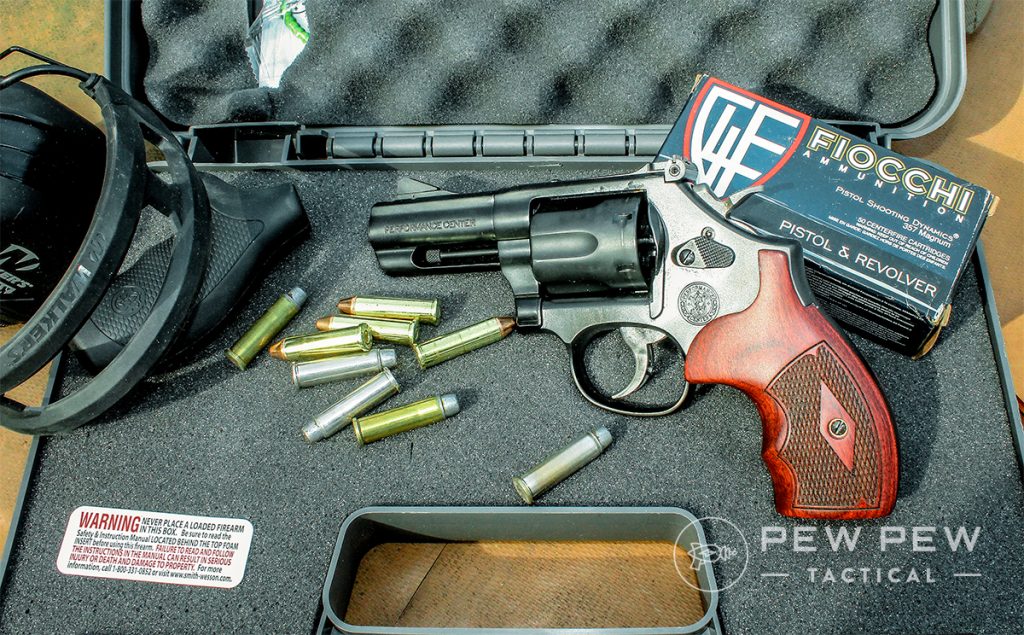
Improper storage of ammo is guaranteed to bring you heartache and set you back a good amount of money as you’re forced to replenish the “spoiled” loads.
Personally, I don’t look at buying ammo as making an everyday purchase.
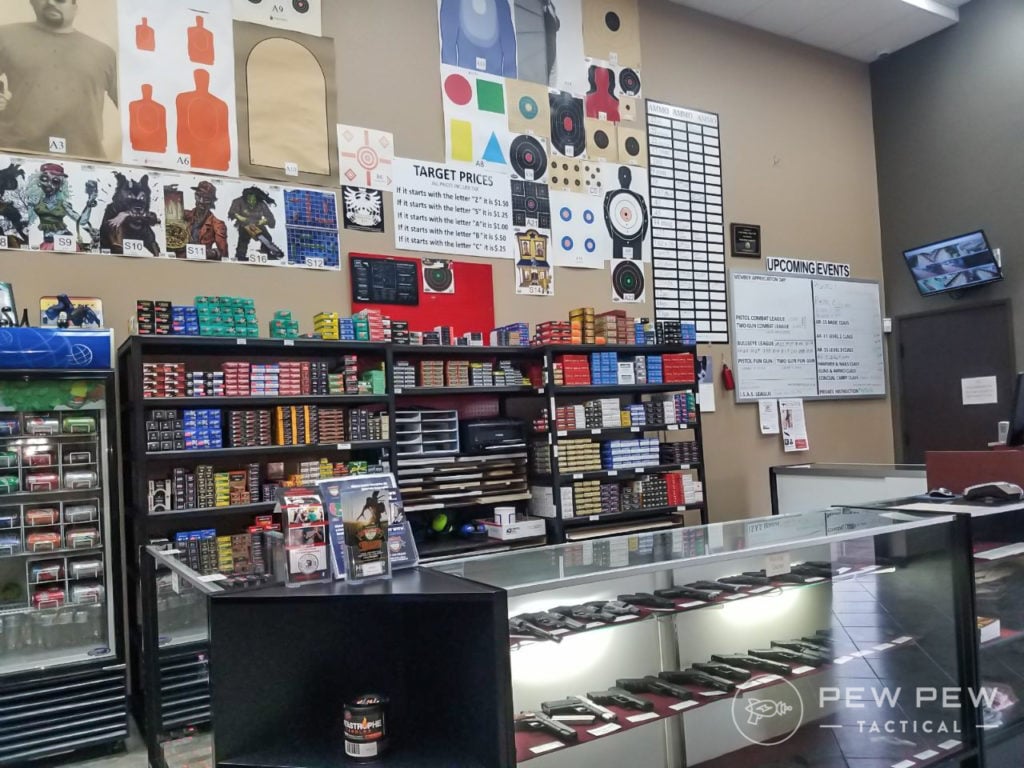
Instead, I see it as making a valuable investment that pays off every time I want to let a few rounds fly at the range, stock the freezer with meat from a hunting trip, or need to use force to protect myself (which, fortunately, I’ve never had to do).
And just like there are ways to protect your financial investments, there are methods to keep your ballistic investments safe and secure.
Let’s have a look at how.
Stay Away from Extreme Heat
For the most part, ammunition is quite resilient to extreme temperatures.
After all, when soldiers go into combat in harsh environments, they have to be able to depend on their rounds to function despite how hot or cold the temperature is.
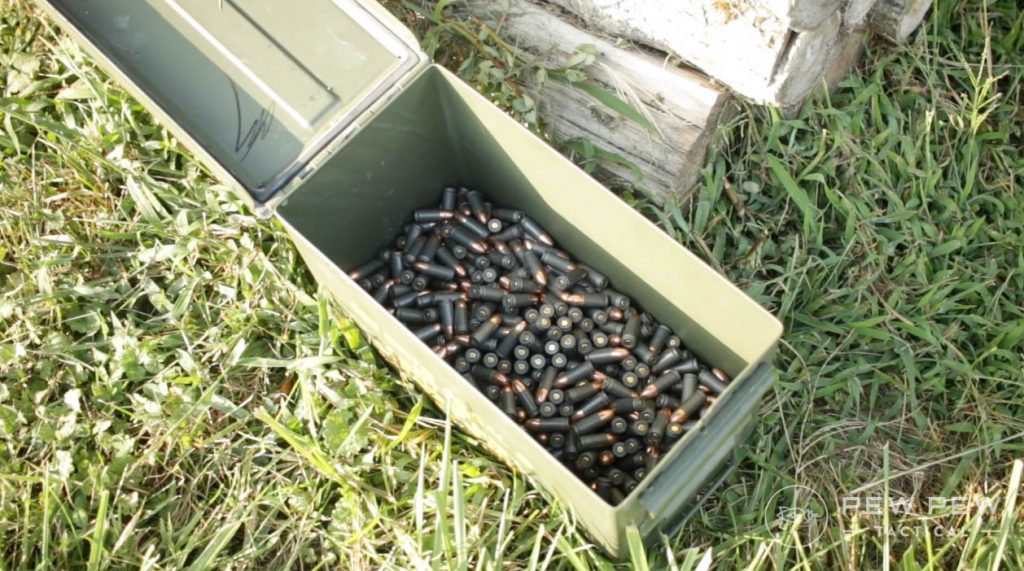
Generally speaking, you shouldn’t have to worry about a heatwave destroying your ammo.
Heat doesn’t start degrading the quality of ammo until it gets to be around 150 degrees Fahrenheit – and to put it in perspective, the hottest day ever recorded in the USA was 134 degrees, and was in 1913 at Death Valley.
With that said, you should start thinking about temperatures when you store your ammo.

If you’ve got ammunition packed away in the trunk of your car for extended periods of time, you better believe that they’re getting exposure to high temps, which could weaken or neuter your ammunition completely.
Nobody wants to spend that much money on a box of duds. So think twice before storing ammo in your car during the summer months.
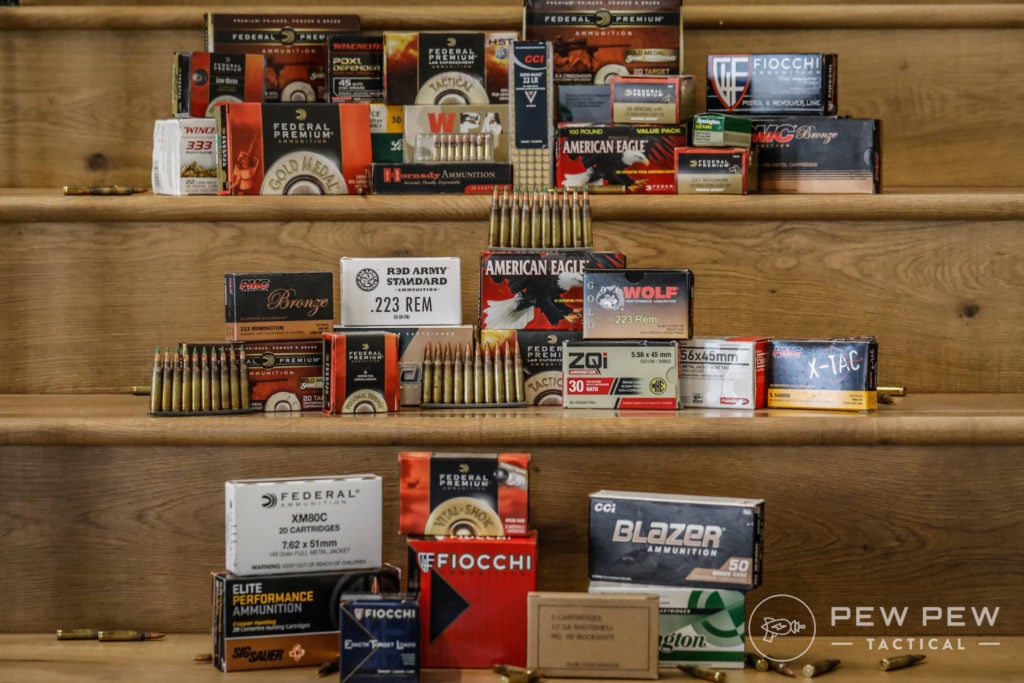
And if you stash away boxes of ammunition in an attic, garage, or cellar that receives a lot of sunlight during the day, you might want to move them to a cooler part of the house during the summer months.
Keep Your Ammo Dry
Like extreme heat, moisture can also cause damage your ammo. You want to make sure that your stockpile is kept away in a cool, dry place.
This is especially true if you live in a humid climate like the Southeastern United States.

The biggest problem caused by humidity or excess moisture is corrosion. Prolonged exposure to moisture will cause the casing to become green and corroded. That warps the ammo and makes it unsafe to shoot.
If your storage area has a moisture problem, then you should not be keeping your ammo there. That means you should avoid places that have mold, mildew, or a constantly damp smell to it.
Just to be safe, stick with a storage location that’s properly ventilated.
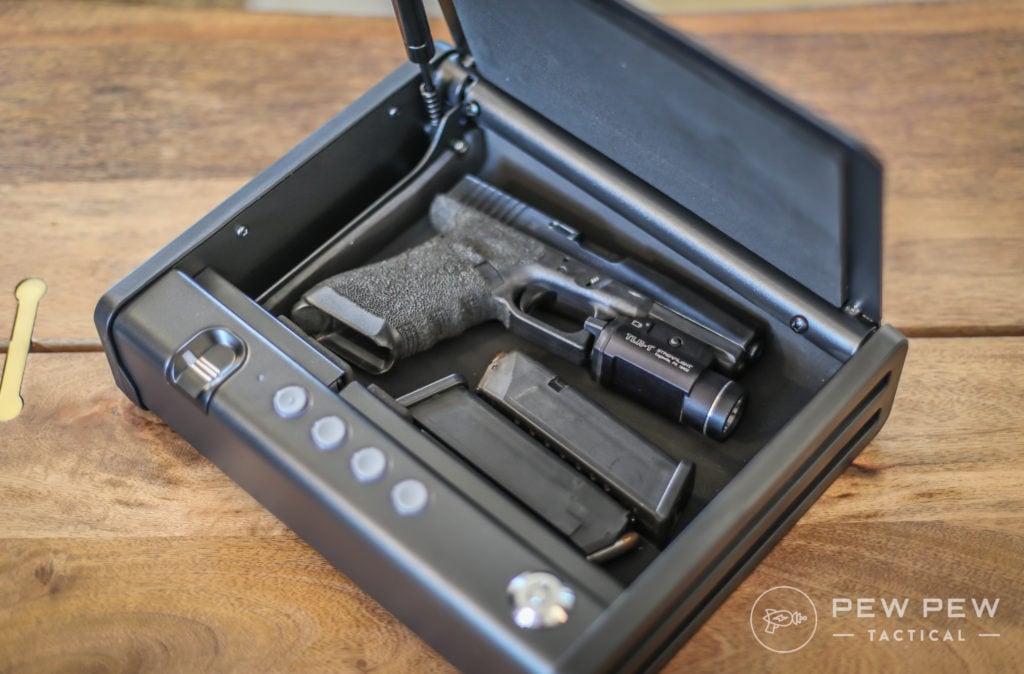
Many people actually seal their ammo in plastic containers to add an extra level of protection.
That, along with using a dehumidifier during the spring and summer months, is a great way to reduce the likelihood of your ammunition becoming damaged over time.
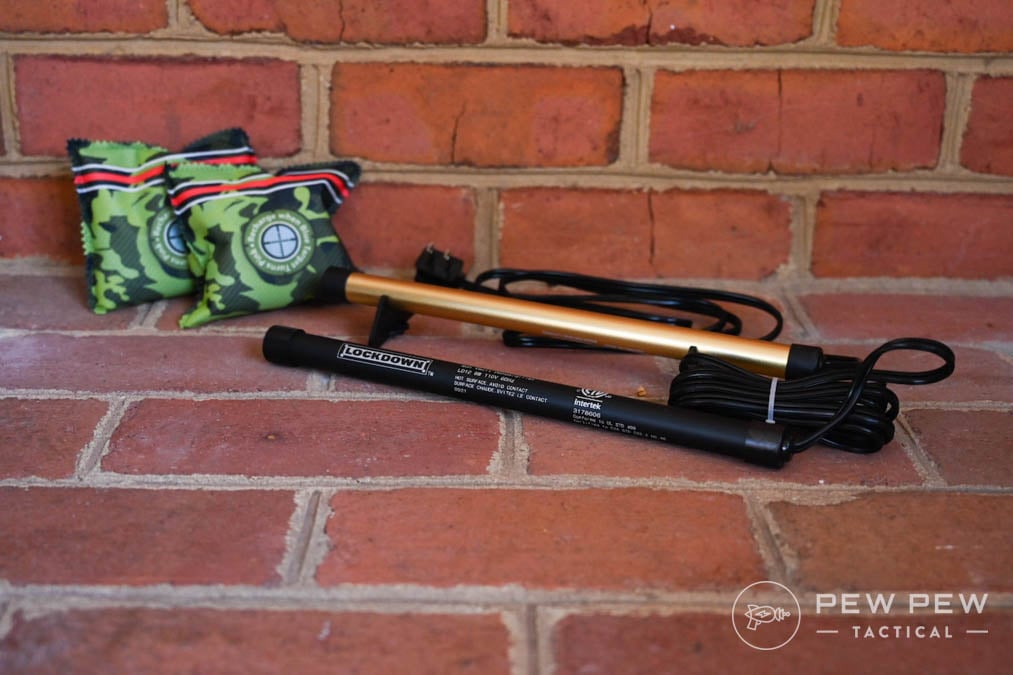
If you don’t have a bunch of spare bottles around or want something a little more stackable, it’s hard to go wrong with some plastic Plano ammo boxes.
Prices accurate at time of writing
Prices accurate at time of writing
-
25% off all OAKLEY products - OAKLEY25
Copied! Visit Merchant
They can be stacked, carried, and stored easily. They can also easily store boxes of ammo instead of just loose rounds.
Preserving the Shelf Life of Your Ammo
You shouldn’t have too much of a problem storing ammo around your house. As long as you keep them away from moisture and extreme heat, your rounds should be fine.

But what about when you store boxes of ammo in locations far away from your home, like your hunting cabin? Keeping some of your ammo stored there makes impromptu hunting trips more convenient.
There is, however, a problem with storing ammo away from home. It leaves you with little control over how protected your ammunition really is.
Fortunately, ammo cans are a great way to keep your ammunition protected against moisture.
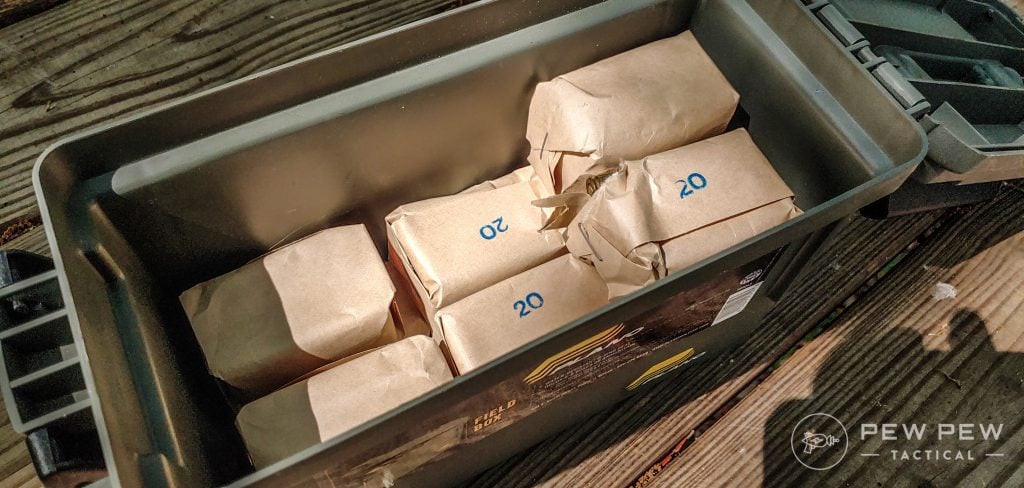
Metal cans are durable, easy to carry, and built with a waterproof seal that’s designed to keep moisture from entering the container.
Best of all, they look really cool.
Prices accurate at time of writing
Prices accurate at time of writing
-
25% off all OAKLEY products - OAKLEY25
Copied! Visit Merchant
However, there is one caveat when using ammo cans — they have to be completely free of moisture inside. Be safe, not sorry – blast the inside of your can with a hairdryer if you think it’s a little damp.
Tips to Help Preserve Ammo
There’s no denying that the ammo can is a game-changer when it comes to preserving your ammunition, but what about those of us with more stockpiled ammunition than our containers can hold?
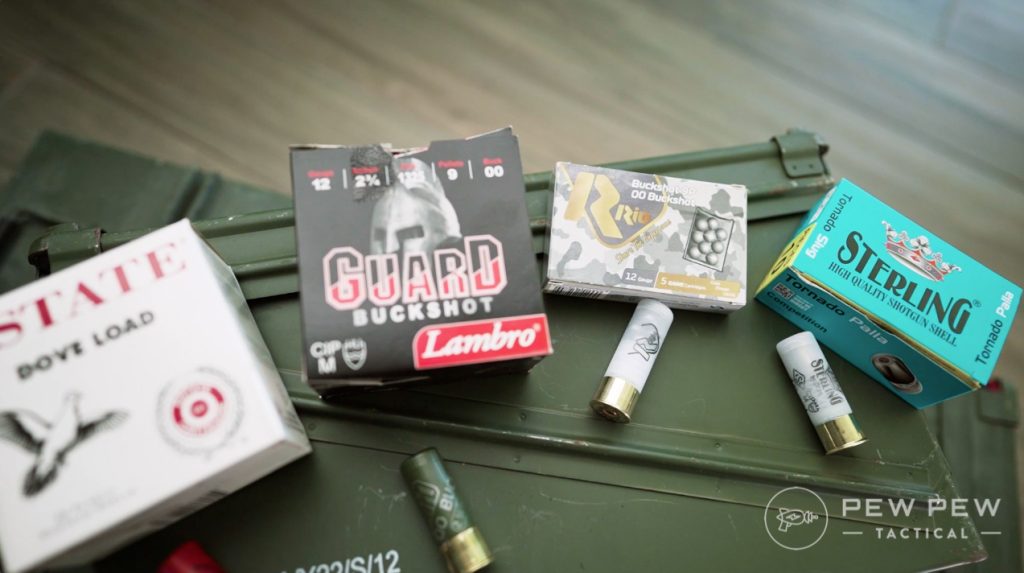
Have a look at some of these tips to help you preserve the life of those aging boxes of ammo.
1. Humidity Control
We’ve already talked about the dangers of humidity and how ammo cans and dehumidifiers can help. If neither of those options is feasible, you can keep your ammunition dry by storing it with desiccant packets.
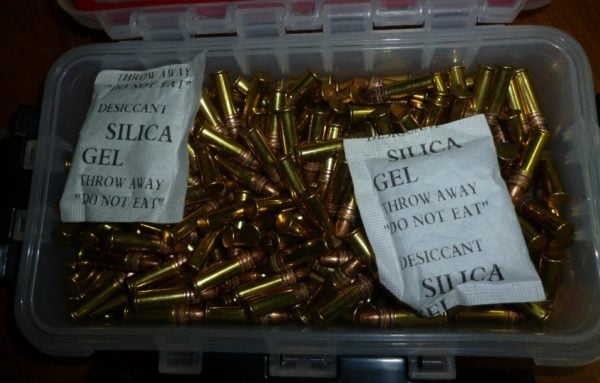
Those are the little white sachets of silica gel that come with products that require absolute dryness, like freeze-dried foods and medicine.
You can buy them in bulk on Amazon, or you can make your own with a sock and silica-based cat litter purchased from your local supermarket.
Prices accurate at time of writing
Prices accurate at time of writing
-
25% off all OAKLEY products - OAKLEY25
Copied! Visit Merchant
We also like rechargeable gel dehumidifiers.
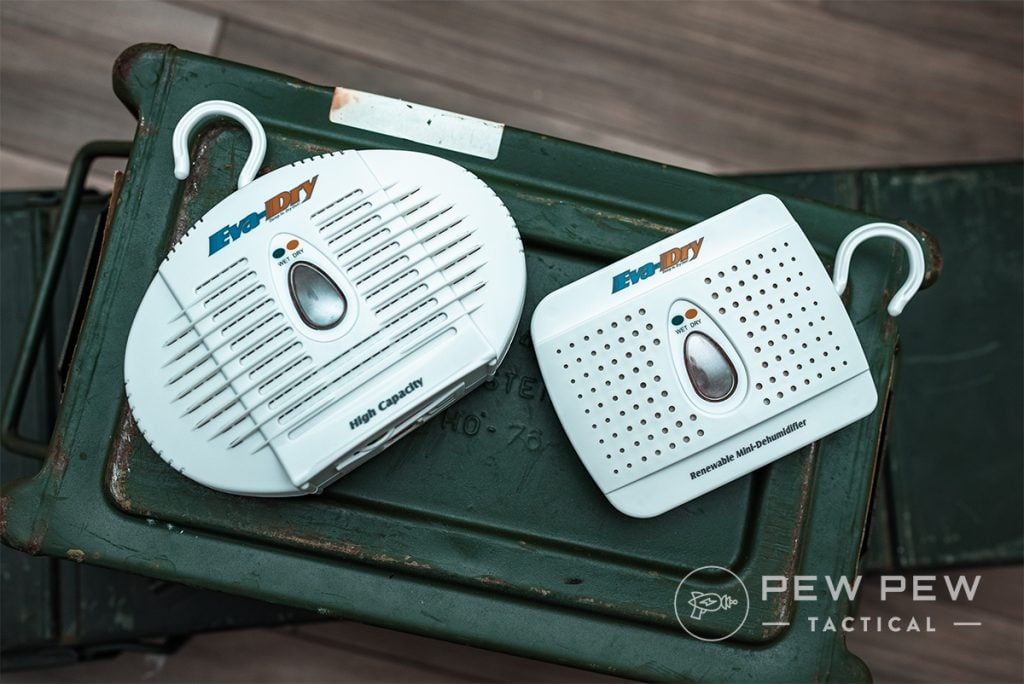
-
25% off all OAKLEY products - OAKLEY25
Copied! Visit Merchant
Or heating rods that you can place at the bottom of safes and other containers.
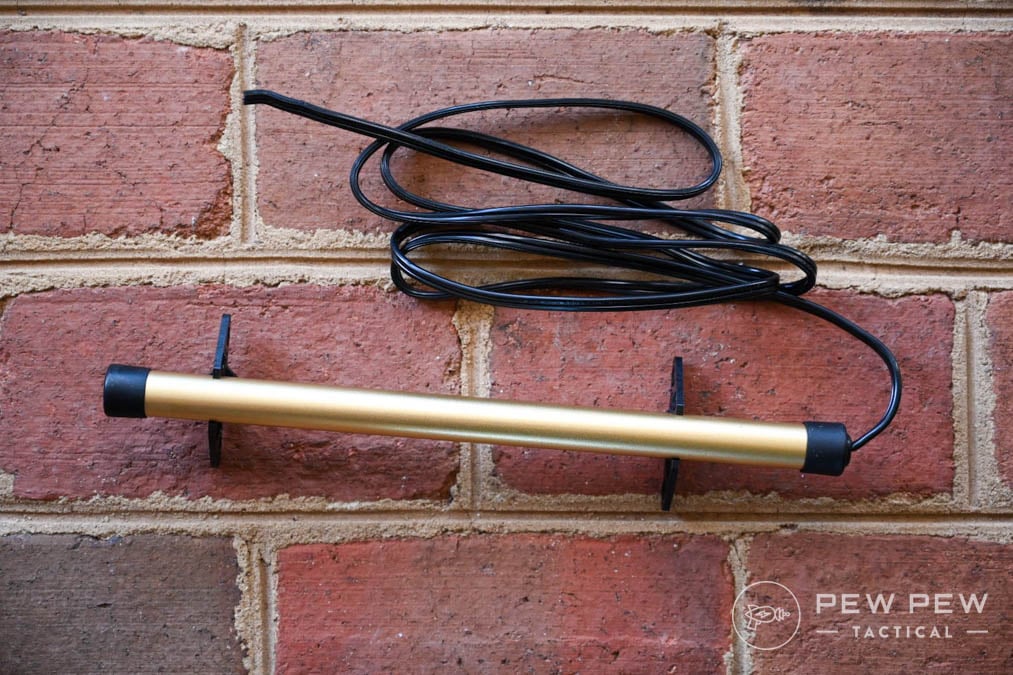
Also, if you order gun parts, computer parts, shoes…just about anything that needs to be kept dry, you’ll find one in there.
Prices accurate at time of writing
Prices accurate at time of writing
-
25% off all OAKLEY products - OAKLEY25
Copied! Visit Merchant
2. Tag and Rotate Ammo
The first thing you should do after purchasing ammo is write the date of purchase on your storage container. This will help you keep track of the various ages of your ammo.
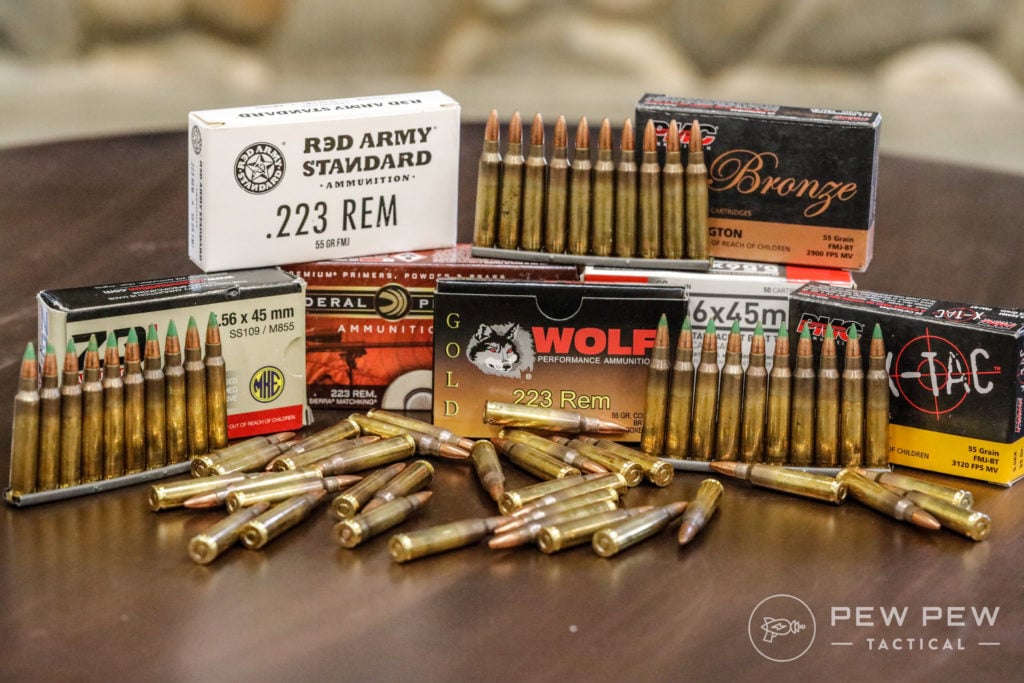
Use your older ammo first so that you keep the newest ammo on hand. Remember, old ammo in the front, new ammo in the back.
Use smaller bullet boxes like a pistol ammo case to keep batches separate within a larger container like an ammo can.
Prices accurate at time of writing
Prices accurate at time of writing
-
25% off all OAKLEY products - OAKLEY25
Copied! Visit Merchant
3. Put It in a Gun Safe
If you don’t have one already, consider getting a good-sized gun safe with a couple of extra shelves for your ammo and other gadgets.
This keeps your ammo away from children and pets, as well as protects it from the elements.
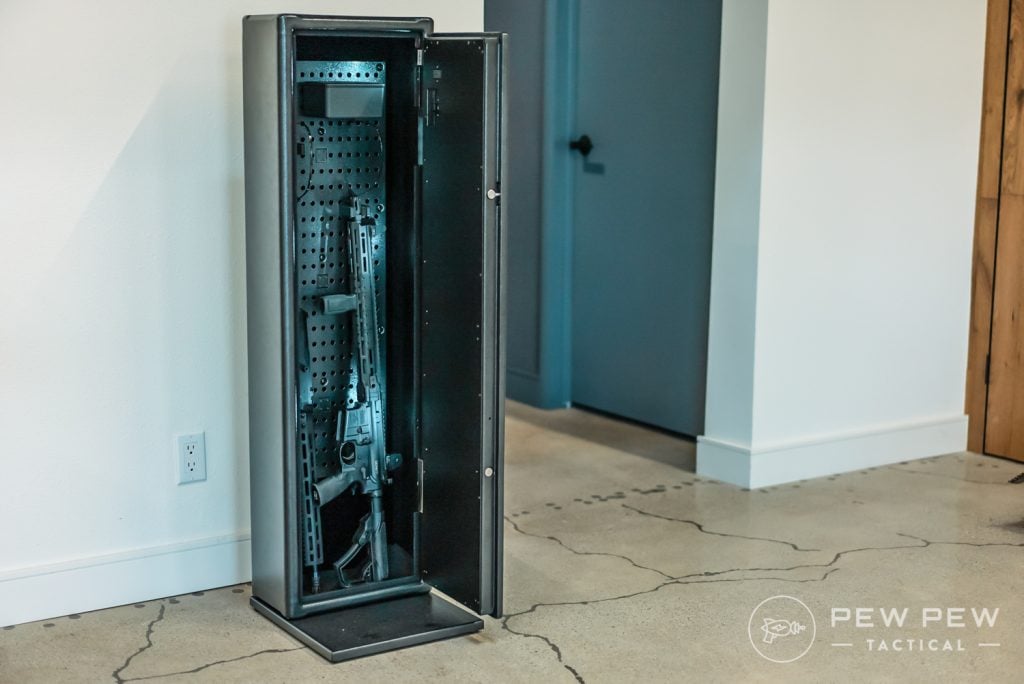
A good gun safe will prevent moisture from accumulating (although you might want to toss in a couple of desiccant packets for good measure) and will help protect your ammo from extreme temperatures.
Be sure to get one that’s fireproof, just in case.
Final Thoughts
Just remember, ammo needs the same kind of love and care as your rifles, shotguns, and pistols. You can’t just buy ammo, let it sit neglected in a corner of your attic or basement for years, and still expect it to function properly.
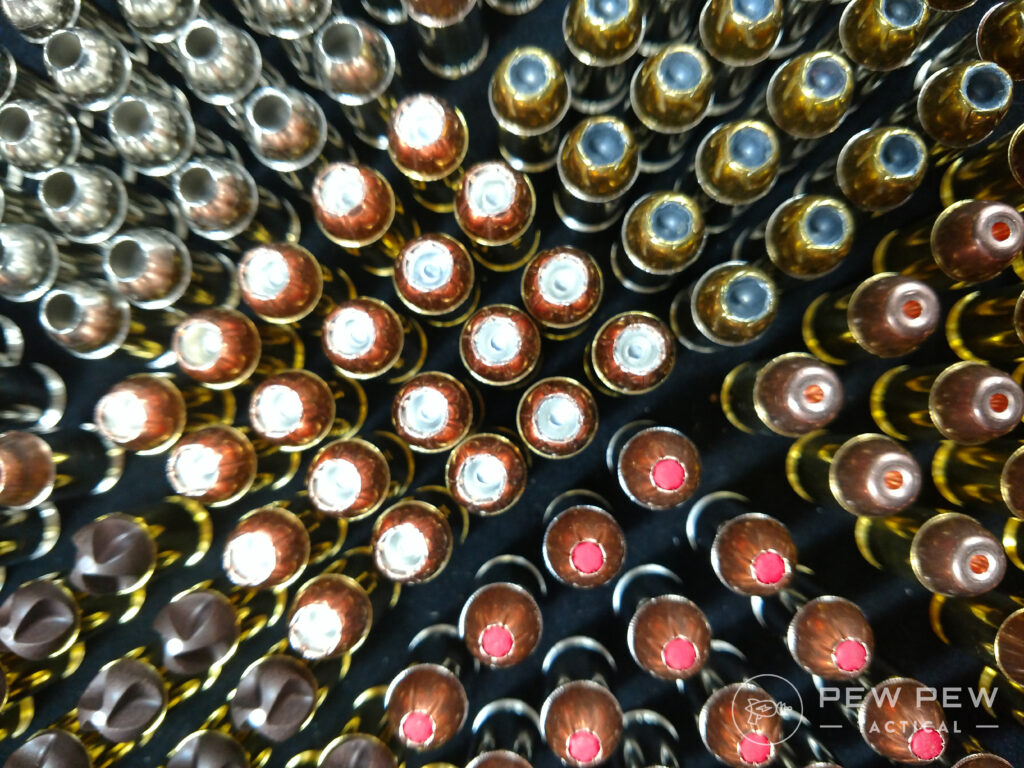
Extending the life of your ammunition to a decade and beyond is not rocket science. As long as it’s stashed away in a cool, dry place, you should be good to go.
Do you have any tips to prolong ammo shelf life that I missed? Let me know in the comments. And if you’re in search of the best places to buy and the best ammo to stockpile, check out our Guide to Ammo & Reloading, where we cover recommendations for all popular calibers.

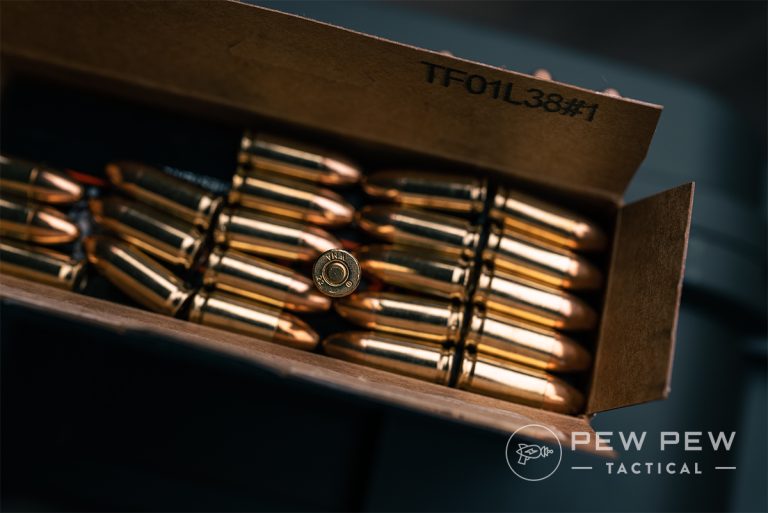
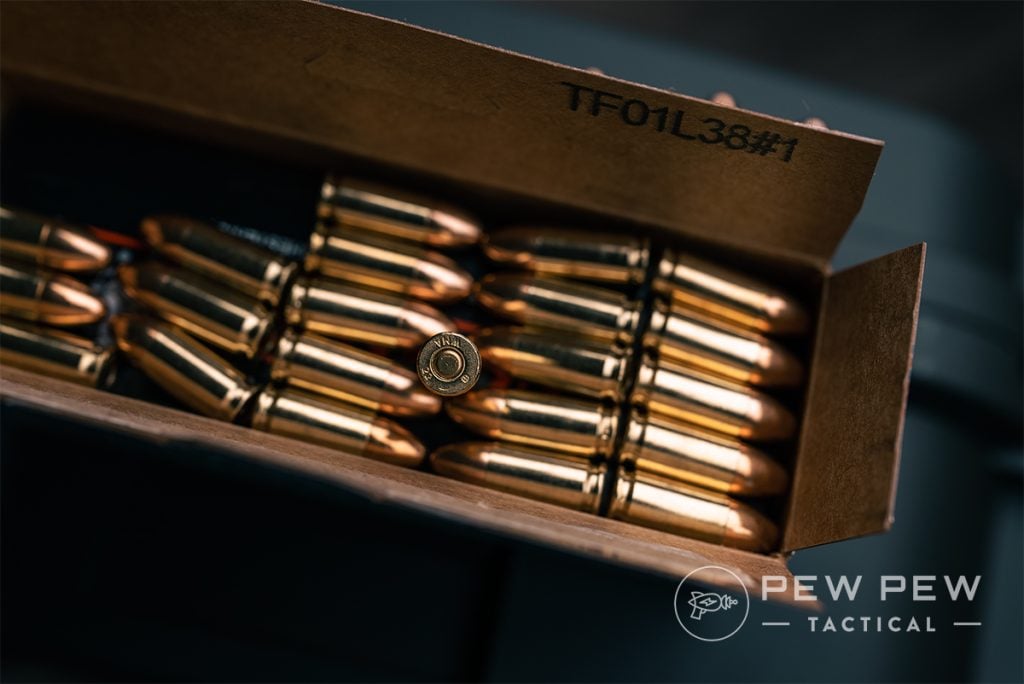
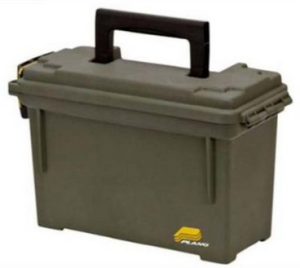

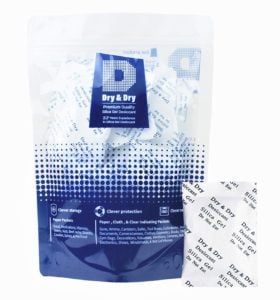










38 Leave a Reply
Vacuum packing ammo in freezer storage bags can protect ammo for an indefinite period of time.
I avoid the plastic ammo cans and stick with metal. Rodents can chew through plastic way too easily. I use mil spec cans, throw in a desiccant pack or two, seal them up and they're ready when I need them. My stock is kept on pallets in a closet under the stairs. Do not store Metal Ammo cans on bare concrete.
We live in South Central Colorado. It's an arid climate, so keeping Ammo dry isn't usually a problem. A few years back my Grandgather passed, and I inherited his few guns and whatever Ammo he had left. Mostly .22 LR and shotgun Ammo. Most of the boxes of .22 LR he had, dated from the 1950s and 60s, the newest was a can of Remingtons from the 70s, but he'd kept it in old WW2 Surplus cans, and in a cool an dry closet in his basement. A few of the unique and rarer boxes I set aside, the rest U took to the range. .22 LR isn't well known for longevity in storage. If you're going to store .22, use up your older stock first is the general rule of thumb. Suprisingly, because of how this Ammo was stored, when I took a bunch out, there were very few failures to fire in .22 LR that was 60 to 70 years old. Counting up the duds after shooting a couple hundred rounds and calculating the percentage was right at 6% failure to fire out of this very old .22. I was a bit amazed, as I figured I'd have more duds. It does show however, that how your Ammo is stowed really effects its shelf life. Stored right, even .22 LR will keep a lot longer than you'd think. Would I depend on it for hunting or protection? No. But for plinking and practice, it still serves.
Anyone that is not storing spare ammo and prepping...WILL BE LATE...Deeply troubling times are coming...It is written and WILL COME...If you choose to ignore and shrug your shoulders...WELL, WOE WITH YOU....
Little late to this party, but some of these comments are insane. Storing ammo in jars and vacuum sealing it?. Seriously, are you burying it in your yard? If you're storing ammo you're doing it mainly because you assume someone is coming to hurt eventually. In that case you're going to need that ammo readily available for reloading not outside or buried. If you just love shooting then you're ammo will be cycled out and no need for extreme storage. Ammo cans are water sealed and can store a ton of loose rounds. There ready for reloading and will last longer than most of you can wait to shoot them. Most manufactured ammo is good quality and will not have a problem being stored. Just like the old fears of ammo corroding barrels because people were using ancient stripper clip rounds that were poorly made. Modern ammo is clean and sealed. So if you want to store your ammo in rice or buried with grandma out back that's your choice. I'm just telling you it's not necessary
Vacuum seal systems like a food saver works great. Buy or reload in bulk & then divide into the vacuum sealed bags. Might help to put the end flap off the box or the details of the reload inside the bag.
Storing ammo in the gun safe? Have to question that, have always been taught that you do not want to store your ammo in your gun safe.
I am sure what you heard goes back to storing your ammo seperate from your guns for safety sake. Never bought that. The guns are worthless without ammo, and I think it would be silly to have to go to 2 different locations to get armed.
I happen to be one of the few engineers with a specialty in moisture diffusion. So here are a few points to consider.
* Safes are typically not sealed. They need air circulation to prevent the stint of the stuff in the safe off-gassing
* Air circulation in the safe helps prevent serious moisture condensation during temperature swings (assuming your safe area has some kind of humidity control).
* All polymers will diffuse moisture so the food vacuum sealer bags have limited life. The life does increase with the square of the thickness, e.g. going from 1mil to 6mil gives you 36x more time. Special note: there are aluminized polymer bags. At least the USA government grade Mil-Prf versions seal against moisture fairly well although we only tested for 1 year.
* Like comments from Vulcan, I like ammo cans with good seals. The seals are polymer, so will diffuse moisture eventually, although the diffusion area is small. Hence use a desiccant to extend the life. Consider some thick plumbing silicone grease to micro-seal imperfections in the seal and metal lip. Even micros-leaks can let a significant amount of moisture in.
* Rice and even wood chips can act as a desiccant. They are not particularly good since they can only absorb about 10% moisture by weight. Silica gel can absorb 3x that by weight. Drying rice or wood chips at 140°F for an hour should have them good for use down to about 40°F (although not well).
* The problem with cold storage is the humidity in a sealed container can reach condensation. Condensation is driven by the dew point. It you bag your ammo under standard conditions (70°F and 50% relative humidity), the dew point is only 50°F. So all your efforts are wasted, although again desiccant will help.
* I use a room dehumidifier, although note that over past 10yr, I only get about 1 year out of each, so buy the extended warranty. These units are from Lowe's (warning). I found a Honeywell unit (Home Depot) comes with a 5yr warranty, so maybe it will hold up.
Good stuff! Thank you for taking the time to share this info with us. It definitely helps put things into perspective.
What are your thoughts on vacuum sealing them in canning jars using the canning jar sealer accessory and adding desiccant packs for good measure?
Awesome info, thanks!
Commercial or mil surp ammo for long term storage is fine. Hand loaded ammo is always for short term use as even the best components and care taken to get right when loading is not the same as a fully controlled factory environment. Have powder from 1993 that is still good to go loading with and works just as well as the batch from 2018, how ever the remains of batches loaded from the 2015 do show signs of age when test against fresh hand loads even with powder from the same batch made at the change over. Yes came across a very good deal for 12kg of the 93 and used for training ammo and save the more expensive new batches for serious use, but loads over a year never quite have the same consistancy as when fresh.
Exactly right. I recently came across a few boxes of 9mm handloads in my garage that I would estimate were about 10 years old, and took them to the range to test their effectiveness. Although they all fired, they wouldn't fully cycle the action in my Glock 19, which is otherwise ultra-reliable. Reloads are for use in the short term, not long-term storage.
Your link for metal ammo cans at Cabellas was intercepted by avant link warning about your commission relationship (not an issue for me). But tapping approve and the Cabellas link didn't come up, screen frozen on the warning. Using VPN in USA.
Very odd, we're not getting the error on our end but I passed it on to be looked into. Thanks for the heads up!
I just tried the link and it worked fine.
Throw a block of Zerust, available in many places-just Google it, into any ammo can or put one in your safe. This will prevent corrosion and does not in anyway harm metal or polymers. It is as good as putting your weapons and ammo into a sealed silicone bag and each unit lasts two years.
Thanks for the info on keeping ammo in your car. I have an extra mag in my truck for my hand gun. It has been there for 3 years. Time to stop that.
VACUUM SEAL >>> Into GI FATBOY CAN >>> Add 6oz bag of DESICCANT.
VACUUM SEAL your ammo! Not much difference between that and the sardine can Russian ammo sealed under vacuum that fires after 3 decades sitting in storage. Zero oxidation.
I like to run my long term stored ammo thru my kitchen vacuum sealer first, in quantities I am likely to use PER range outing so I don't have to cut open a big bag leaving the leftover needing to be sealed. Mark them with a Sharpie with purchase date, etc if you like. Then drop in a fatboy can with a good seal, THEN drop in a rechargeable 6 - 8 ounce bag of Desiccant. Rare but can have a slow leaker bag so check yearly for leakers on a very low humidity day.
Another plus by dropping those in a functional tight seal ammo can is to buy a little extra time to grab a fire extinguisher should the smoke alarm go off, to get it out so it doesn't touch off your ammo if it gets too bad.
Have found functional and cheap fatboy ammo cans at Wally World and Harbor Freight and on sale or coupon as cheap as $10 at times. They are plenty strong, the spot welds on the handles are adequate and do not let go even with a packed can.
BUT --- you MUST check the upper seal tucked inside the rim of the top lid. Be SURE there is a good indentation on that soft material and it mates up good with the top rim of the bottom part of can OR you have a leaky can!!! At both places, about 50% of the cans fail this. SO, do your part, be patient and check until you find as many as you need or come back another day when more come in stock. No point in buying an ammo can that leaks.
I do a lot of cooking too, so a QUALITY food sealer is important to me, and after 4 of them over the years, my ProVac260 is fantastic, and does soups too with the pulse feature. It's now 6 years old. Seems they changed their name or were bought out and may today be the ARY company. I've run the snot out of my ProVac 260 and it still works great, and has outstanding suction!!! Some don't, and a cheap one won't. Plan on spending $120 and up for a decent one. The generic bag rolls from Amazon are very good and BETTER than the big name pricey stuff! Get the 25' half rolls so they fit into your machine and you don't have to cut a 50' roll in half.
Happy shooting.
I vacuum pack all my ammo. With freeze bags we use for meat. Never had any problems.I have some that 19 yrs old works just fine.
Isn't rice a good desiccant? It would also fit nicely between loose bullets in a can. And when the SHTF, you can cook it and eat it (as long as you're not worried about lead contamination).
Actually no, rice is a terrible desiccant. All dried grains are fairly bad at it, but uncooked white rice (the most commonly available in the USA and the most often used for this application) is specifically horrid - one of the worst in fact.
Silica gel is quantifiably the best commonly available desiccant. It is also quite cheap, 25 packs for $11 at Amazon. I throw one into each ammo can.
I get industrial grade blue indicating silica gel from eBay for $29 for 5 lbs, which in the 4-5 mm bead size fills a 1 gallon plastic paint can. Can be used in the small and travel size pain relief bottles when empty. I riddle the plastic with 3/64, or 5/64 drill bit. The color indicating will let you know when it needs reactivated: small SS bowl @ 250 deg/2hrs. Another fact I learned from the mfgr, even when the color turns pink, the beads are only ~60% moisture holding capacity. Just interesting...
Fantastic information thank you.
Andy UK
If you do use the food product route (not the best idea) I've found that pork rinds, yes you read that right! Like the dry ones you get from Walmart, Kroger's etc. absorb moisture unbelievably! Use them if you get you cell phone wet instead of the rice trick. But silica is the best especially long term but don't eat it. Ymmv
I really like that you mentioned being careful when buying ammo in bulk since it can become corroded and green if you don't use it soon. I have a friend who is looking to find some local ammo sales so she can stock up on ammo for shooting. I think I'll talk to her about making sure she uses it up before it corrodes.
Thanks, good info as always. Enjoy reading all your articles. I would like to see a best Glock upgrades write up if there is not one already.
There is right here! And we'll be adding to it soon.
Actually not a good idea to put your ammo in your gun safe. Buy a cheap side locker for ammo. If your safe is in a fire the bullets can detonate and cause damage to every thing in the safe. This is safe storage 101 for ammo.
I do believe the guns would have no wood or plastic by the time the ammo goes off and probably would not matter. Just a rule I was raised with you keep ammo outside of valuable gun storage.
I have a lot of ammo from 1942, german 8x57 Mauser. Stored i various conditions, No problems using this ammo. Still accurate, but corrosive.
Everyone says the same thing low temp & low humidity. WHAT TEMP AND HUMIDITY to preserve ammo for 10-20 years?
I store ammo by putting it in a plastic ammo box, then putting the ammo box in a vacuum seal bag with a small desiccant pack. Should be good for a long time!
Just be careful with putting anything that can absorb moisture inside an ammo can because it will eventually vacuum it shut and you will have to destroy the can to get it open.
It does vacuum it shut and I've opened up ones that have been in cool temperatures for 5 years. I had to pry it with a screwdriver. But so far none that I had to destroy!
I would of never thought of using silica gel packets for ammo,get idea.
If the silica gel packs absorb water if heard they will losing effectiveness, well then they can basically be baked on a low heat ( I forget the exact time and temp 150° f for. Half hour maybe) to draw moisture out of them and make them useable again. This will tend to be the case in really humid environments..
For storage I do just this, cool, dark place in ammo cans, I've shot ammo ranging from 5-10 yrs old and only ever had a dude on cheap 22 ammo never center fire ammo (knock wood) I have some 22lr from 1983 I hope to test out soon.
6000 rds under my bed, no worries about access, humidity,or damp
if it moves, shoot it